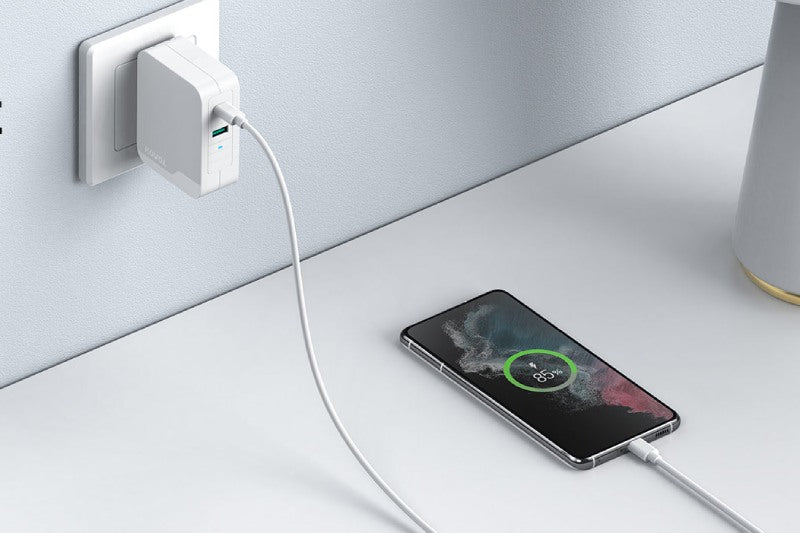If I charge my iPhone overnight, the battery will be overcharged: FALSE
You don't have to think too hard about preserving the battery of your smartphone, especially overnight.
For years, the myth has persisted that charging your smartphone while sleeping will harm the battery. Though many people do it anyway, others warn that charging a phone that is already fully charged wastes the capacity of the battery.
But, while those concerns were understandable with older batteries, they are now exaggerated.

Reasons Why You Can Charge Your Phone Overnight
One thing that all experts agree on is that smartphones are intelligent enough to prevent overload. Extra security chips inside ensure that this cannot happen on a tablet, smartphone, or even a laptop.
Charging stops when the internal lithium-ion battery reaches 100% capacity. If you leave the smartphone plugged in overnight, it will consume some energy by constantly adding new juice to the battery when it reaches 99%. This shortens the life of your phone.
Don't be too concerned about this. When you go to bed, plug in your phone or place it on the wireless phone charger. If you wake up in the middle of the night, unplug it or move it to avoid constant trickle charging. Alternatively, plug your phone into a smart plug that is set to turn off on a schedule.
Things to Pay Attention to When Charging Your Phone Overnight
Is it hot in here?
Heat can be generated by trickle charges. Many experts recommend removing a phone from its case to charge it overnight. However, with a complicated protective case, this is not always possible.
At the very least, do not pile items such as books or other devices on top of a charging device. Do not put it under your pillow. If you do any of the above, you can expect the phone to get hot—not hot enough to cause spontaneous combustion, but hot enough to damage the battery.
If you're afraid of fire, some people in the UK recommend leaving the charging device plugged in on a dish or saucer, or putting it on something metal that will dissipate heat, like a heatsink on the chips inside a PC. If you use a wireless charging pad, that's not much of an option, so don't worry about it.
Low-quality cables
It could be a problem if you're using a knock-off cable that isn't from the manufacturer or isn't "certified" in some way (iPhone Lightning cables, for example, should be MFi certified). The cord and connectors may not meet the requirements of the phone or tablet. Don't skimp by purchasing cheap cables.
More Ways to Keep Your Battery in Good Condition
So, how can you make your smartphone's battery last longer? Here are a few pointers.
- Use partial charges to keep your battery charged between 20% and 80%.
- There is no need to discharge your battery to 0% before charging. That means going from 0 to 100% consumes an entire charging cycle. Charge when it is convenient for you, and don't be concerned about percentages.
- By not charging your phone at night, you can reduce the amount of time your battery is kept at 100%. This is when the battery degrades the most.
- Keep your phone as cool as possible. Heat shortens the life of your battery, so tucking it under your pillow is one of the worst things you can do. The same is true if you leave your phone in the sun or outside in the cold.
- Turning off unnecessary services will help you save battery life on your device. Use battery savers to get even more use out of each charge.
- If you wake up in the middle of the night and notice that your phone is fully charged, unplug it. It won't make a huge difference, but it won't hurt either.
You might not notice much of a difference in the short term. But you'll be pleased if your phone can still last a full day on a single charge after a year.
Conclusion
If you plan to change phones every year or two, charge them however you want, as often as you want, and don't be concerned about the reduced capacity. However, if you want to go the extra mile, follow the best practices for lithium-ion batteries outlined above. It might be useful. Alternately, you could just have a new battery installed every few years. It costs a lot less than a brand-new phone.
